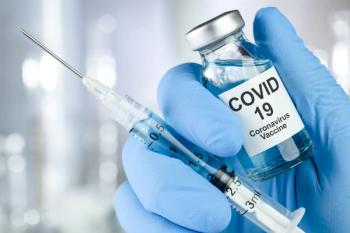
Rise in IPD Calls for Development of More Pneumococcal Vaccines
Key Takeaways
- The incidence of invasive pneumococcal disease nearly doubled from 2012 to 2024, highlighting the need for vaccines with greater valency.
- Despite PCV20's efficacy, researchers emphasize the necessity for vaccines beyond PCV20 to address nonvaccine serotypes.
With disease cases increasing substantially between 2012 and 2024, higher-valent vaccines are necessary to protect against nonvaccine serotypes and invasive pneumococcal disease.
Amid nearly a 100% increase in invasive pneumococcal disease (IPD) between 2012 and 2024, there is an apparent need to develop pneumococcal vaccines with greater valency to protect against nonvaccine serotypes (NVTs).
Despite efficacy in the 20-valent pneumococcal conjugate vaccine (PCV20)—as well as a stabilization of IPD potential from 2018 to 2023—researchers believe greater valencies are necessary beyond PCV20, according to a study published in the Journal of Infection.1
“To date, over 100 different pneumococcal serotypes with unique capsular polysaccharides have been identified with different ability to cause IPD,” wrote authors of the study. “PCVs are effective in protecting against IPD caused by included serotypes.”
IPD is a notably common disease among children, older adults, and immunocompromised individuals. Ranging from upper respiratory tract infections to invasive diseases like pneumonia and meningitis, IPD is caused by Streptococcus pneumoniae (S. pneumoniae) bacteria.1 However, the introduction of PCVs in 2007 allowed for a plummet in IPD rates among children.2 According to the CDC, between the years of 1998 and 2001, IPD cases decreased by 95% among children under 5 and 99% for diseases caused by serotypes in PCV13.3
READ MORE:
The early formulations of PCV7 and PCV13, however, have since been replaced with PCVs of higher valencies. At the current moment in the US, PCVs are much more utilized than the other variation of pneumococcal vaccination, which is the pneumococcal polysaccharide vaccine (PPSV).4 The PCVs available in the US include PCV15, PCV20, and PCV21 (the newest pneumococcal vaccine offering on the market).5
“Worldwide, vaccine impact has been monitored through surveillance of pneumococcal carriage and IPD incidence,” continued the authors.1 “Following the introduction of PCVs in national immunization programs (NIPs), shifts in serotype carriage and disease towards NVTs have been observed.”
Amid the decline in IPD and colonization of S. pneumoniae, shifts in serotypes have increased the prominence of NVTs—or bacteria that a patient is not protected against when they receive the PCV. To monitor these changes and analyze the value of PCVs, researchers conducted a study consisting of data from the Netherlands spanning 20 years. Their goal was to analyze higher-valent PCVs, serotype-specific carriage, IPD, and invasive disease potential.
Using data from the Dutch NIP, researchers included participants from 2 separate cohorts and compared their findings with data from carriage studies spanning 2005 to 2016. The 2 cohorts included in the analysis were observed in the 2018 to 2019 or 2022 to 2023 winter seasons. All IPD data from child and adult participants spanned from 2004 to 2024.1
The analysis featured a total of 331 patients in the 2018 to 2019 cohort (52% boys; mean age, 24.4 months old) and 330 in the 2022 to 2023 group (53% boys; mean age, 24.1 months old).
“Our data suggest an effective vaccination strategy, as evidenced by decreased and stabilized overall pneumococcal carriage rates and minimal detection of PCV10 serotypes in both carriage and IPD,” they wrote. “Concurrently we observe serotype replacement, predominantly by NVTs and PCV20-specific serotypes. Serotypes from higher valent PCVs also show high invasive disease potential.”
Pneumococcal carriage decreased throughout the study period, going from 66% of the population in 2005 to 49% in the 2018 to 2019 cohort and 46% in 2022 to 2023. Furthermore highlighting the effectiveness of PCV development and implementation, the parents of participants also saw a 15% decrease in carriage from 2005 to 2023.
However, despite these declines, IPD incidence increased among patients under 5 between 2018 and 2020 as well as 2022 and 2024. This recent increase in IPD among Dutch children, according to the researchers, is owed to the 19A serotype.
Within the cycle of serotype distribution that encapsulates both PCV-specific serotypes and NVTs, researchers agree that higher-valent PCVs continue to be necessary across nations’ vaccine programs. Despite great progress toward improving IPD rates among children, serotype distribution is expected to persistently trigger the development of more PCV formulations.
“In conclusion, this study shows stabilized overall pneumococcal carriage between 2018-2023 with minimal invasive disease potential for the most frequently circulating serotypes,” concluded the authors.1 “However, between 2012 and 2024 the overall IPD incidence nearly doubled and the relatively high invasive disease potential of NVTs highlight the need for implementation of a more-valent vaccine aimed at highly invasive NVTs.”
READ MORE:
Ready to impress your pharmacy colleagues with the latest drug information, industry trends, and patient care tips? Sign up today for our
REFERENCES
1. Wulffraat MT, van de Weijer NG, Wijmenga-Monsuur AJ, et al. Evolving pneumococcal epidemiology and vaccine impact in the Netherlands, 2004–2024: carriage and invasive disease. J Infect. November 13, 2025:106658. https://doi.org/10.1016/j.jinf.2025.106658
2. Progress in introduction of pneumococcal conjugate vaccine --- worldwide, 2000--2008. CDC. October 24, 2008. Accessed November 17, 2025. https://www.cdc.gov/mmwr/preview/mmwrhtml/mm5742a2.htm
3. Pneumococcal disease surveillance and trends. CDC. September 9, 2024. Accessed November 17, 2025. https://www.cdc.gov/pneumococcal/php/surveillance/index.html
4. Pneumococcal vaccine recommendations. CDC. October 26, 2024. Accessed November 17, 2025. https://www.cdc.gov/pneumococcal/hcp/vaccine-recommendations/index.html
5. Pozniak S, Jacobsen S. Pneumococcal vaccines: types, ingredients, and efficacy. GoodRx. February 4, 2025. Accessed November 17, 2025. https://www.goodrx.com/health-topic/vaccines/pneumonia
Newsletter
Pharmacy practice is always changing. Stay ahead of the curve with the Drug Topics newsletter and get the latest drug information, industry trends, and patient care tips.













































































































































